|
 
A cave leech (Hirudinea, Erpobdellidae) from Croatia
with unique
morphological features
Croatobranchus mestrovi
is a troglobitic leech from deep shaft-like
caves in the Mt. Velebit, Dinaric karst, Croatia, living in cold (4-6 °C)
water.
Croatobranchus mestrovi was first found during
the expedition "Lukina jama '94" just at the bottom of Lukina jama
(-1392 m). It moves like a caterpillar (stretching-contracting motion) and has
extremities, which look like small legs. It is was named Croatobranchus
mestrovi. Genus
Croatobranchus received the name from the country of origin and side
extremities (most probably auxiliary respiratory organs - branchia).
Species name mestrovi
is in honour of academician Milan Meštrov, Croatian biologist. Another proposed name (after DNA analyisis) is Erpobdella mestrovi
(Oceguera-Figueroa 2005), but
Croatobranchus mestrovi is still in use (Sket 2008).
Its oral sucker extends to form four pairs of triangular tentacles, each
with about five finger-like papillae, but widening into a marginally crenulated
disc when attached to a substrate. Pairs of stiff, finger-like lateral
projections, probably gills, occur along the body behind the clitellum. Somites
are simple five-annulate. Despite the unique head morphology and the presence of
lateral outgrowths, the anatomy and 18S rRNA gene sequence of this species
indicate that it is a member of the Erpobdellidae, closely related to Dina
(Sket 2001).
In recent years
Croatobranchus mestrovi was found in a few deepest caves in
the Mt. Velebit, at the bottom of Slovacka jama (-1320 m), Olimp (-531 m)
and Velebita (-1026 m).
Particularly rich in troglobionts is the family Erpobdellidae. Some described or
undescribed cave species are present in southern Europe (N
Italy–Balkans–Turkey–Caucasus), their derivative is also the extraordinarily
transformed Croatobranchus mestrovi form deep caves in the Croatian Dinaric
mountains. Some undescribed species, probably erpobdellids, occur in caves of
China and the US (Sket 2008).
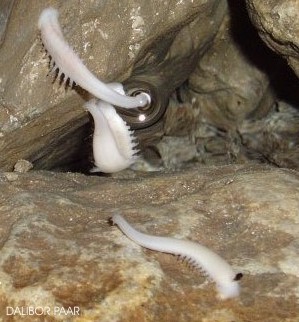
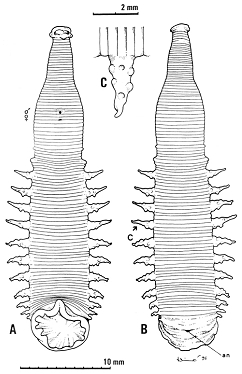
Croatobranchus mestrovi at the bottom of the
Velebita
cave (-580 m). Photo: Dalibor Paar. Drawing:
Kučinić et al. 1999.

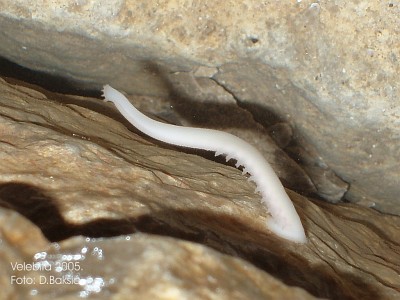
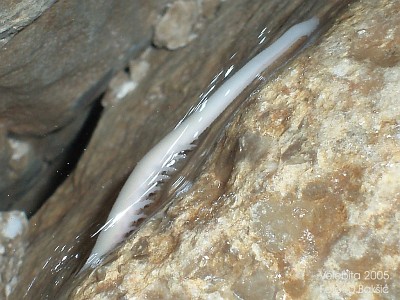

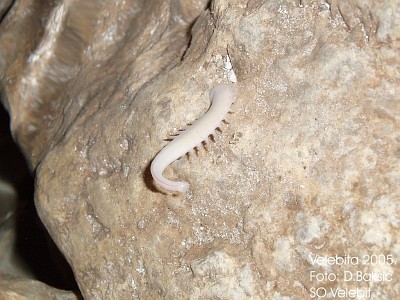
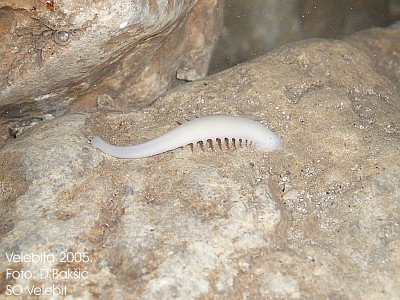
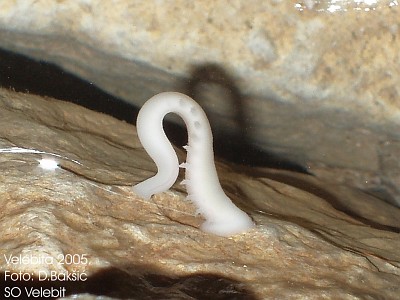
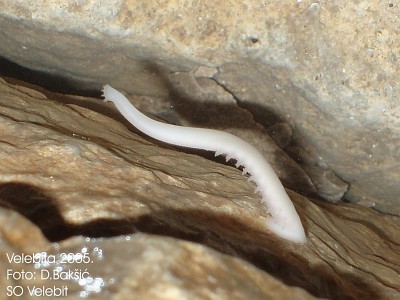
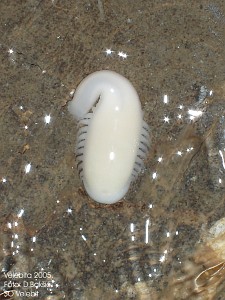
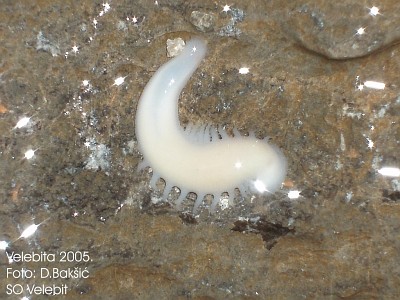
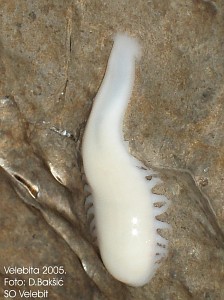
Erpobdella Mestrovi.
Cave
system
Velebita, at -580 m. Photo: D.Bakšić
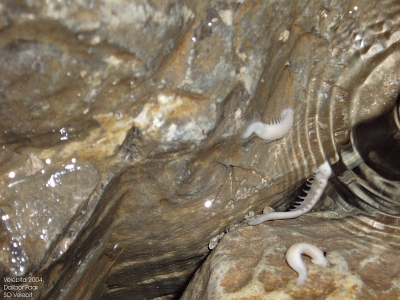
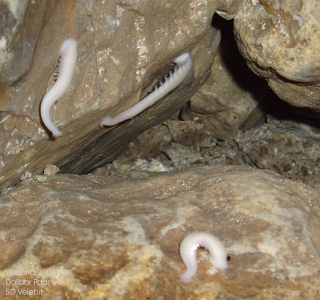
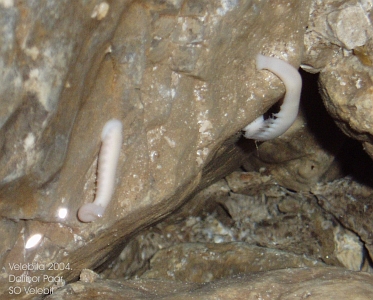
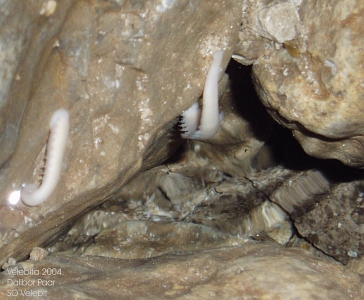
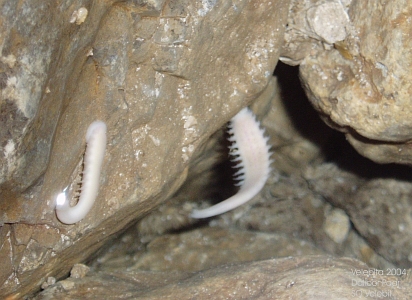
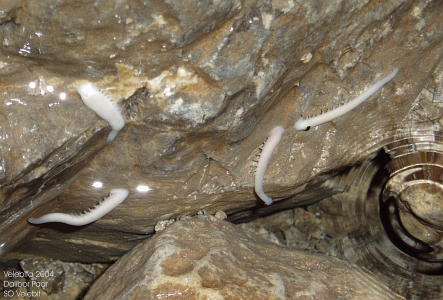
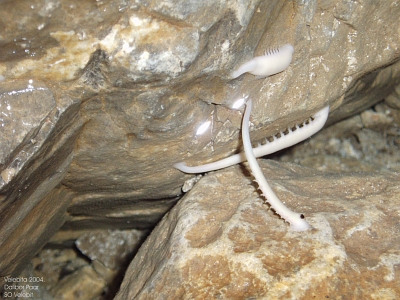
Croatobranchus Mestrovi.
Cave
system
Velebita, at -580 m. Photo: D. Paar
References:
-
Kerovec,
M., Kučinić, M., Jalžic, B., 1999.: Croatobranchus mestrovi sp. n.
-predstavnik nove endemske podzemne vrste pijavica. Spelolog 44/45, 35–36.
-
Oceguera-Figueroa,
Alejandro , León-Règagnon Virginia, Siddall, Mark E. 2005.: Phylogeny and revision of
Erpobdelliformes (Annelida, Arhynchobdellida) from Mexico based on nuclear
and mithochondrial gene sequences. Revista Mexicana de Biodiversidad 76 (2):
191-198.
-
Sidall, Mark E.,
2002.: Phylogeny of the leech family Erpobdellidae (Hirudinida : Oligochaeta). Invertebrate Systematics, 16, 1–6.
-
Sket, B.,
Dovc, P., Jalžić, B., Kerovec, M., Kučinić, M., Trontelj, P,
2001..
: A cave leech (Hirudinea, Erpobdellidae) from Croatia with
unique morphological features. Zoologica Scripta 30, 223–229.
-
Sket, B.,
Trontelj, P., 2008. Global diversity of leeches (Hirudinea) in freshwater.
Hydrobiologia, 595: 129-137.
|